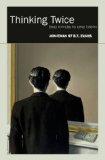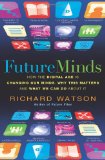new – ‘Book of Symbols: Reflections on Archetypal Images’
November 27, 2010
This would make a wonderful gift for anyone interested in Jungian psychology, dreams, or symbolism:
The Book Of Symbols: Reflections On Archetypal Images by the Archive for Research in Archetypal Symbolism (Tarcher, 2010)
Product description from the publisher:
Reflections on symbols and symbolic imagery
The Book of Symbols combines original and incisive essays about particular symbols with representative images from all parts of the world and all eras of history.The Book of Symbols combines original and incisive essays about particular symbols with representative images from all parts of the world and all eras of history. The highly readable texts and almost 800 beautiful full-color images come together in a unique way to convey hidden dimensions of meaning. Each of the c. 350 essays examines a given symbol’s psychic background, and how it evokes psychic processes and dynamics. Etymological roots, the play of opposites, paradox and shadow, the ways in which diverse cultures have engaged a symbolic image—all these factors are taken into consideration.Authored by writers from the fields of psychology, religion, art, literature and comparative myth, the essays flow into each other in ways that mirror the psyche’s unexpected convergences. There are no pat definitions of the kind that tend to collapse a symbol; a still vital symbol remains partially unknown, compels our attention and unfolds in new meanings and manifestations over time. Rather than merely categorize, The Book of Symbols illuminates how to move from the visual experience of a symbolic image in art, religion, life, or dreams, to directly experiencing its personal and psychological resonance.
The Book of Symbols sets new standards for thoughtful exploration of symbols and their meanings, and will appeal to a wide range of readers: artists, designers, dreamers and dream interpreters, psychotherapists, self-helpers, gamers, comic book readers, religious and spiritual searchers, writers, students, and anyone curious about the power of archetypal images.
See also: A nice 12-page pdf preview is available through the ARAS website. (Click on “See More” by the book cover.)
Better yet, at the publisher’s website, you can “leaf through” the first 100 pages!







